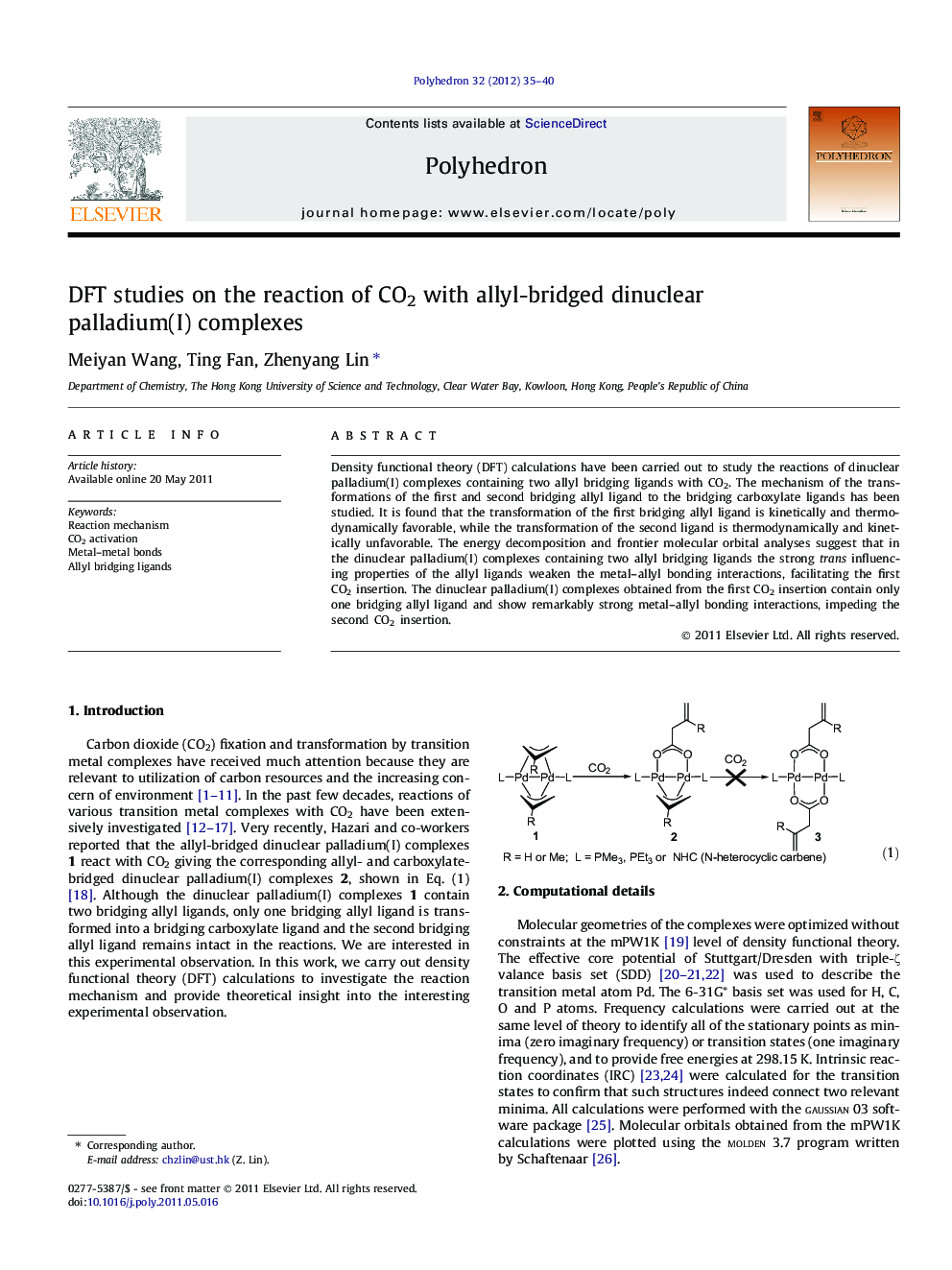| Article ID | Journal | Published Year | Pages | File Type |
|---|---|---|---|---|
| 1337983 | Polyhedron | 2012 | 6 Pages |
Density functional theory (DFT) calculations have been carried out to study the reactions of dinuclear palladium(I) complexes containing two allyl bridging ligands with CO2. The mechanism of the transformations of the first and second bridging allyl ligand to the bridging carboxylate ligands has been studied. It is found that the transformation of the first bridging allyl ligand is kinetically and thermodynamically favorable, while the transformation of the second ligand is thermodynamically and kinetically unfavorable. The energy decomposition and frontier molecular orbital analyses suggest that in the dinuclear palladium(I) complexes containing two allyl bridging ligands the strong trans influencing properties of the allyl ligands weaken the metal–allyl bonding interactions, facilitating the first CO2 insertion. The dinuclear palladium(I) complexes obtained from the first CO2 insertion contain only one bridging allyl ligand and show remarkably strong metal–allyl bonding interactions, impeding the second CO2 insertion.
Graphical abstractDensity functional theory (DFT) calculations have been carried out to study the reactions of dinuclear palladium(I) complexes containing two allyl bridging ligands with CO2.Figure optionsDownload full-size imageDownload as PowerPoint slideHighlights► We studied the reactions of allyl-bridged dinuclear palladium(I) complexes with CO2 theoretically. ► The bis-allyl-bridged dinuclear palladium(I) complexes are reactive toward CO2 insertion. ► The mono-allyl-bridged dinuclear palladium(I) complexes are inert toward CO2 insertion. ► The two strong trans influencing allyl ligands in the bis-allyl-bridged complexes destabilize the metal–allyl interactions. ► The μ2–η3-bridging allyl ligand is nucleophilic in the CO2 insertion reactions.
